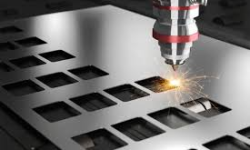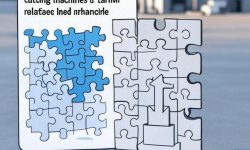
Introduction
When you’re about to drop serious cash on an industrial laser cutting machine, you want to get it right the first time. These machines aren’t cheap, and choosing the wrong one can drain your wallet and your patience. Whether you’re starting a fabrication business or upgrading your shop, knowing what features matter most can save you from costly regrets.
1. Cutting Power and Laser Source
Fiber vs CO2
The first big decision? Fiber or CO2 laser. Fiber lasers have pretty much become the industry standard for metal cutting thanks to their:
- Higher efficiency
- Lower maintenance
- Better performance on reflective metals
CO2 lasers still have their niche if you’re cutting lots of non-metals like plastics, wood, or acrylic.
Power Levels for Different Materials
Power matters—a lot. Here’s a rough guide:
- 1kW – 3kW: Thin sheet metals
- 4kW – 6kW: Medium-thickness metals
- 8kW+: Thick plates, faster cutting, and production work
Higher power generally means faster cutting and thicker material capacity, but also a bigger price tag.
2. Cutting Speed and Productivity
Impact of Speed on Production Output
In manufacturing, time is money. Faster cutting equals more parts per shift, higher profit margins, and quicker delivery times.
Balancing Speed with Accuracy
But don’t sacrifice quality for speed. The best machines balance high cutting speeds with razor-sharp precision, even on complex geometries.
3. Material Compatibility
Metals vs Non-Metals
Not all laser cutters handle every material equally well.
- Fiber lasers: excellent for steel, aluminum, copper, brass.
- CO2 lasers: better for wood, acrylic, plastics.
Reflective Materials Handling
Fiber lasers have a clear advantage when it comes to cutting highly reflective metals that can damage CO2 optics.

4. Precision and Accuracy
Tolerances
Look for machines that deliver tight tolerances – ideally ±0.05mm or better for critical components.
Repeatability
Consistent part quality across multiple production runs is crucial, especially for industries like aerospace and medical device manufacturing.
5. Automation Capabilities
Auto-Loading and Unloading
Full automation can dramatically reduce labor costs and increase throughput. Look for:
- Automatic material loaders
- Part unloaders
- Stacking systems
Nesting Software Integration
Advanced nesting software maximizes material utilization and reduces waste.
Remote Monitoring
Modern systems allow you to monitor performance, diagnose issues, and optimize production remotely.
6. Maintenance Requirements
Preventive Maintenance
Some machines practically babysit themselves; others demand constant attention. Fiber lasers generally require less upkeep than CO2 machines.
Ease of Service
Ensure local support is available, and that spare parts aren’t impossible to source.
Downtime Considerations
Less downtime = more profit. Prioritize machines known for reliability.
7. Energy Efficiency
Long-Term Cost Savings
Fiber lasers consume significantly less power than CO2 systems. Lower energy bills translate into long-term savings that add up.
Green Manufacturing Benefits
Energy-efficient machines also help meet growing demands for eco-friendly manufacturing practices.
8. Safety Features
Enclosures
Fully enclosed machines protect operators from laser exposure and debris.
Fume Extraction
Effective fume extraction systems are critical for health and compliance with regulations.
Operator Safety Standards
Look for machines that comply with international safety certifications (CE, ISO, etc.).
9. Software and Control System
User Interface
A modern, intuitive interface can save hours of training and reduce operator error.
CAD/CAM Compatibility
Your machine should easily integrate with common design software and support multiple file formats.
Real-Time Monitoring
Live monitoring helps detect issues early and optimize performance.
10. After-Sales Support and Warranty
Service Contracts
Consider what kind of service agreements the manufacturer offers.
Spare Parts Availability
Ensure parts are readily available to avoid long downtimes.
Manufacturer Reputation
Choose brands with strong reputations for reliability and customer service.
Bonus: Budget Considerations
Total Cost of Ownership vs Purchase Price
Don’t just look at the sticker price. Consider:
- Energy consumption
- Maintenance costs
- Consumables
- Downtime risks
Often, a pricier machine pays for itself quicker due to better efficiency and lower operating costs.
Common Mistakes to Avoid
- Chasing cheap machines that cost more long-term
- Underestimating power needs
- Ignoring software compatibility
- Forgetting about maintenance requirements
- Neglecting training and operator skill levels
Conclusion
Buying an industrial laser cutting machine isn’t a casual decision-it’s a major investment that shapes your business’s future. Focus on cutting power, material compatibility, automation, maintenance, and long-term operating costs. Always think beyond the initial purchase price. If you get these ten features right, you’ll have a machine that pays for itself and powers your business for years to come.
FAQs
Q1: Should I choose fiber or CO2 for metal cutting?
Fiber lasers are typically better for metal cutting due to efficiency, speed, and versatility with reflective materials.
Q2: How much power do I need in a laser cutter?
It depends on your material thickness. 1-3kW for thin sheets; 4-6kW for medium; 8kW+ for heavy production.
Q3: Is automation worth the extra cost?
Yes, automation can dramatically reduce labor costs, increase throughput, and offer fast ROI for high-volume production.
Q4: How often does a laser cutting machine require maintenance?
Fiber lasers require much less maintenance than CO2, but regular preventive checks are always recommended.
Q5: Can one machine handle both metals and non-metals?
It’s rare. CO2 lasers handle non-metals better; fiber lasers excel at metals. Some hybrid solutions exist, but they come with compromises.










